De la Rue’s 125th anniversary
In around 1955 De la Rue introduced a new coloured joker and a series of aces of spades with a silhouette of Thomas de La Rue which coincided with their 125th anniversary
De la Rue’s Silhouette Aces of Spades and Coloured Jokers
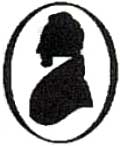
In around 1955 De la Rue introduced a new coloured joker and a series of aces of spades containing a silhouette of Thomas de la Rue. This coincided with the 125th anniversary of the granting to Thomas de la Rue of a Royal Letters Patent by King William IV for the printing of playing cards by the typographical process in 1857. The silhouette aces of spades first appeared in c.1957 and underwent several changes in lettering and design, in particular when the three pence duty was dropped in 1960, but also including a white collar in some versions. The coloured joker is first known in July 1955 but was subsequently replaced by a harlequin joker in 1961.
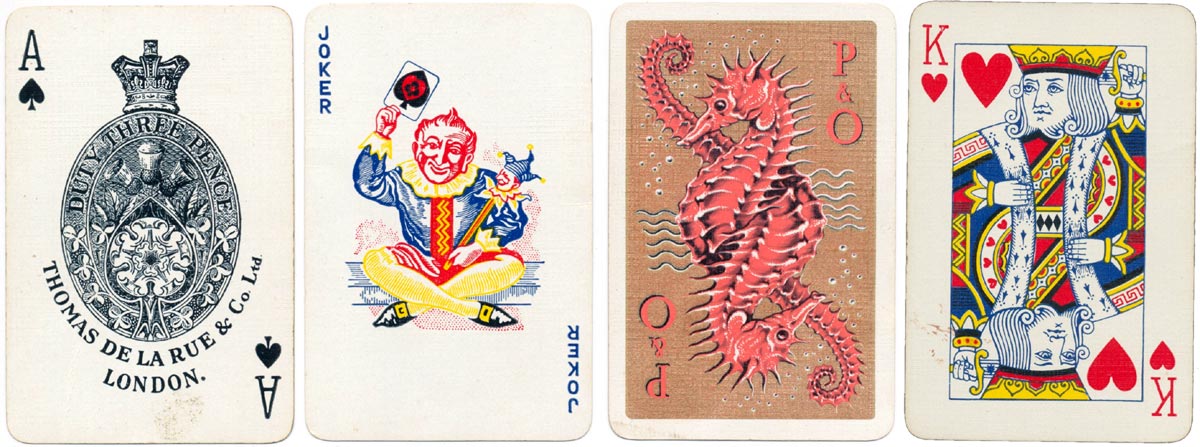
Above: De la Rue’s standard ace of spades with the new coloured joker instead of the earlier black and white version, c.1955.
• See also:
New Zealand Shipping Company, c.1955 •
Royal Snowdrift Oil, c.1955 •
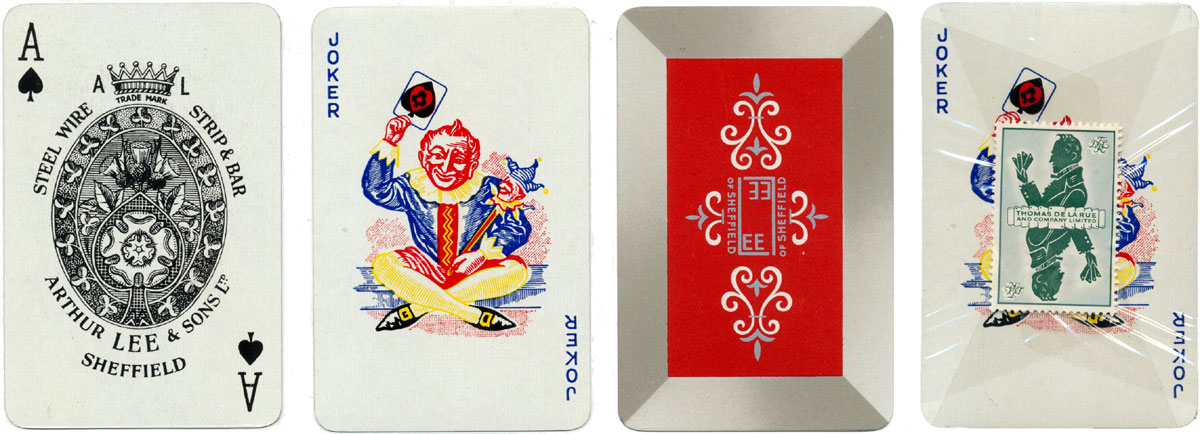
Above: Advertising deck with special ace of spades based on the conventional design, produced for Arthur Lee and Sons Ltd of Sheffield by Thomas De la Rue around 1958. The deck contains two colured jokers and a security stamp bearing Thomas De la Rue’s silhouette.
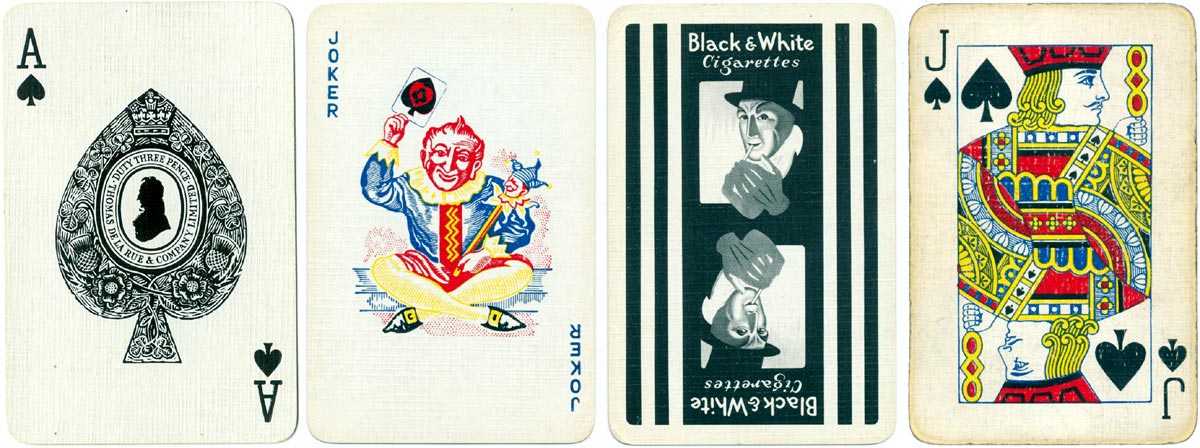
Above: De la Rue’s silhouette ace of spades with three pence duty and the new coloured joker for Black & White Cigarettes, c.1957.
• See also: Ben Line Shipping •
3M Company •
3M Company with special joker •
British Road Services •
American Express
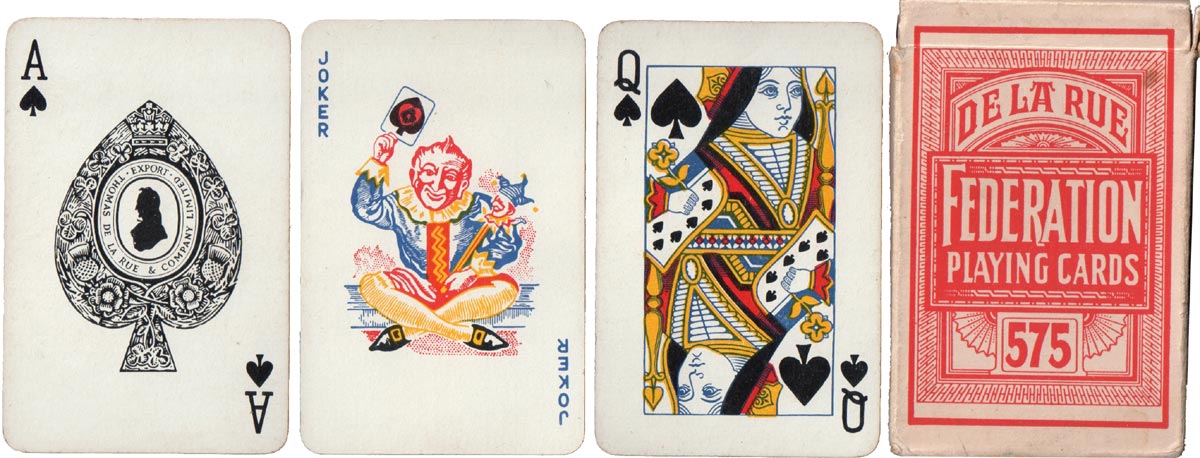
Above: export version of De la Rue’s silhouette ace of spades with the coloured joker, 1957-60.
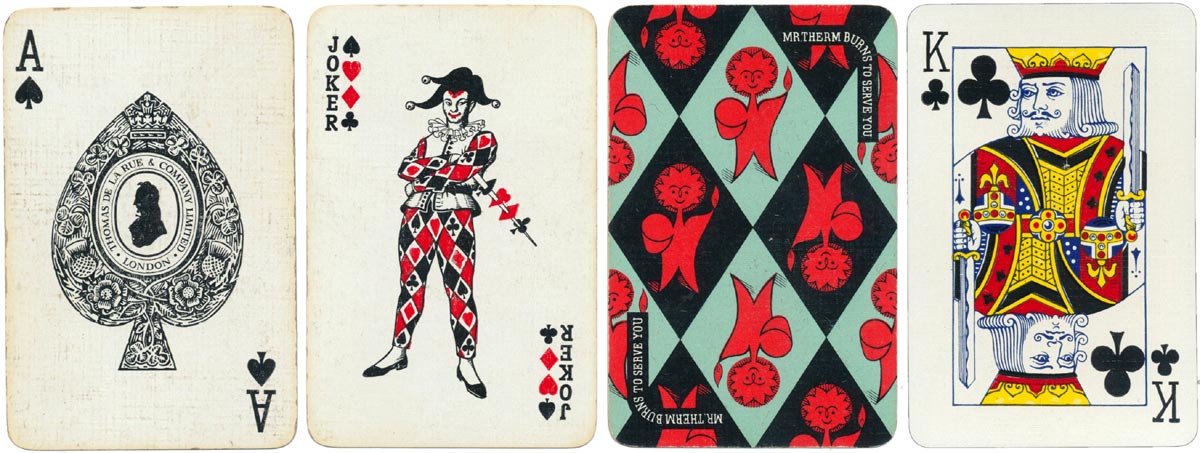
Above: De la Rue’s silhouette ace of spades with the three pence duty removed and the harlequin joker for the British Gas Council, c.1962.
• See also: R.M.S. Windsor Castle •
Pneumatic playing cards, c.1960-65 •
Society playing cards, c.1965 •
Steels Garages, c.1966 •
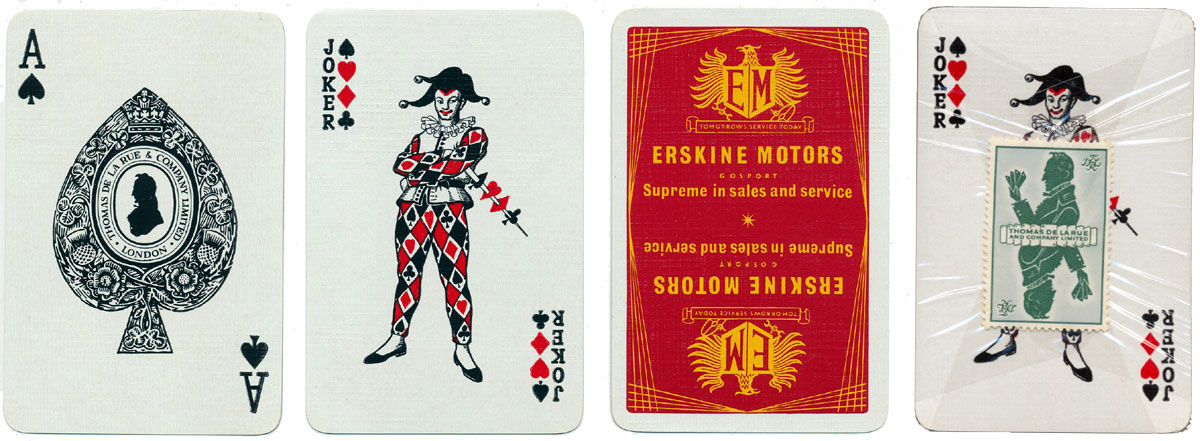
Above: De la Rue’s silhouette ace of spades with the three pence duty removed and the harlequin joker for Erskine Motors (Gosport), with security stamp bearing Thomas De la Rue’s silhouette, c.1962.
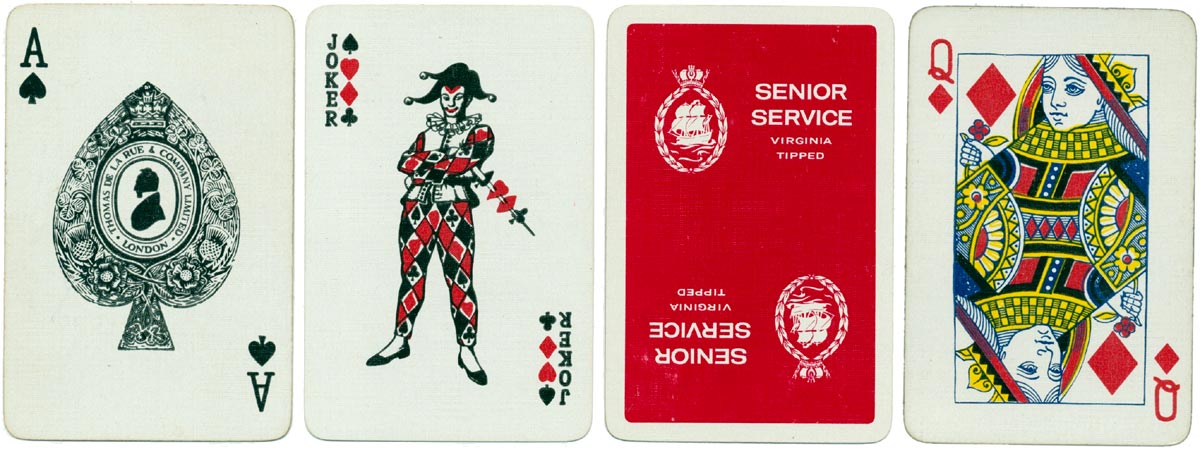
Above: advertising deck for Senior Service cigarettes with De la Rue’s silhouette ace of spades with a white collar, c.1965.
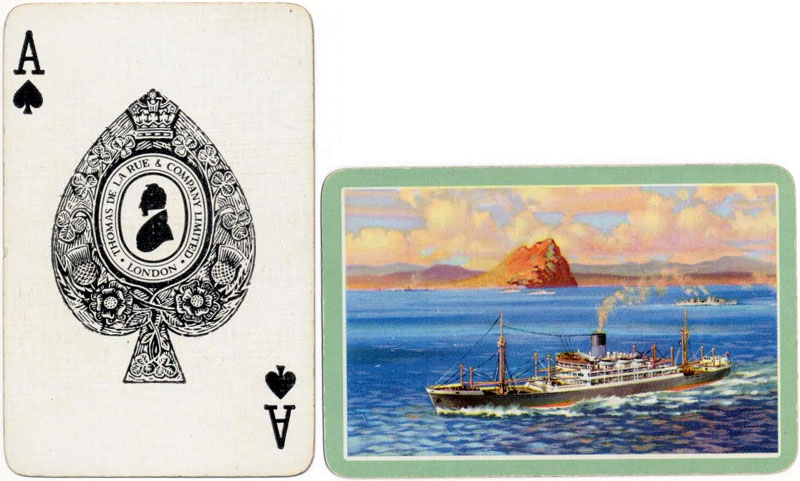
Above: De la Rue’s silhouette ace of spades with a white collar, c.1965-69. See also: Henderson Derrick Cranes►
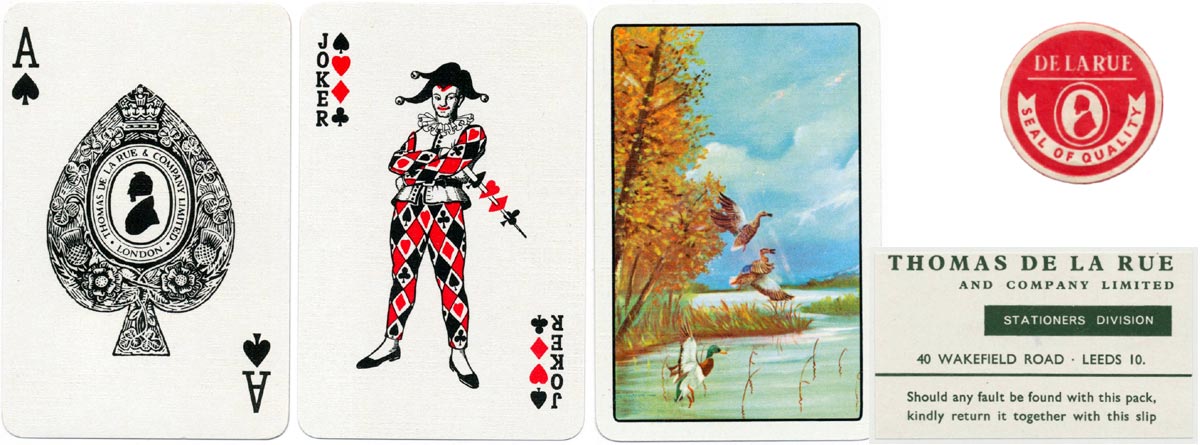
Above: De la Rue’s silhouette ace of spades with a white collar, c.1965-69. Tha ace gives the address as ‘London’, whereas the quality control slip gives the address in Leeds.
In 1969 De La Rue sold out to Waddington's, who then became Britain's leading playing card manufacturer.
‘Wheel’ Playing Cards
Wide sized ‘Wheel’ aces were probably made for export. They are found with or without the name printed at the foot. Also used by Waddingtons in ‘Zodiac Club Playing Cards’ for Pepys with Goodall courts, after Alf Cooke had been bought out, with ‘Wheel’ backs, c.1972.

Above: various De la Rue aces of spades, including the ‘Wheel’, with versions of the joker, 1950s-1970. Top: DLR Wheel printed by Waddington, c.1965. Middle row: DLR Wheel, same box as above, with Goodall & Son ace and bridge courts on wide cards, c.1956 or later. Bottom: DLR Wheel AS with letterpress bridge courts on wide cards; APCC on gold box seal, c.1968. Images courtesy Ken Lodge.
NOTES
The occasion of the 125th anniversary of the granting to Thomas de la Rue of a Royal Letters Patent by King William IV (1832) was also celebrated by the first ever International Conference of playing card manufacturers in London in October, 1957, along with an International Exhibition of Playing Cards, an International Bridge Tournament and the printing of a specially designed pack of playing cards by Jean Picart le Doux→
REFERENCES
De la Rue and Co. Ltd, Thomas: International Playing Card Conference and Exhibition, conference agenda and delegates’ information pack including transcripts of papers, De la Rue & Co., London, 1957
Lodge, Ken: The Standard English Pattern (second revised and enlarged edition), Bungay, Suffolk, 2010 [excerpts on www.plainbacks.com]
Thanks to Matt Probert for images and Ken Lodge for additional research.

By Simon Wintle
Member since February 01, 1996
I am the founder of The World of Playing Cards (est. 1996), a website dedicated to the history, artistry and cultural significance of playing cards and tarot. Over the years I have researched various areas of the subject, acquired and traded collections and contributed as a committee member of the IPCS and graphics editor of The Playing-Card journal. Having lived in Chile, England, Wales, and now Spain, these experiences have shaped my work and passion for playing cards. Amongst my achievements is producing a limited-edition replica of a 17th-century English pack using woodblocks and stencils—a labour of love. Today, the World of Playing Cards is a global collaborative project, with my son Adam serving as the technical driving force behind its development. His innovative efforts have helped shape the site into the thriving hub it is today. You are warmly invited to become a contributor and share your enthusiasm.
Related Articles

Copechat Paramount Sorting System
Preserving the past: a specimen deck showcasing edge-notched cards and their ingenious sorting syste...

Heartsette by Herbert Fitch & Co, 1893
A glimpse into a busy print and design office in late Victorian London.

Batman® playing cards
Batman playing cards published by InterCol of London 1989.

Can You Believe Your Eyes?
“Can You Believe Your Eyes?” playing cards featuring visual illusions & other oddities.

Pastime Playing Cards for the Blind
The “Pastime” Playing Cards for the Blind manufactured by Goodall & Son Limd., c.1910.

French Revolutionary cards by Pinaut
Seven cards from a French Revolutionary pack by Pinaut featuring characters from classical antiquity...

Songs with Flute accompaniment
Eighteenth century English engraved cards with music for voice and flute.

Love Tests
Vintage novelty “Love Test” cards of a slightly saucy nature but all in good fun!

Ben 10 playing cards
Characters from the American animated television science fantasy series Ben 10.

Doctor Who Trump Card Game
Game for two players in which Doctor Who and the Legendary Legion join battle with the Alien Hordes....

Disney’s Aladdin playing cards
Characters from the 1992 Disney film Aladdin.

2011 Worshipful Company Pack
Celebrating the bicentenary of the birth of Charles Dickens, with characters adapted from drawings b...

Jockey Club de Buenos Aires
Spanish-suited pack by Chas Goodall & Son Ltd for the Jockey Club, Buenos Aires.

New interest in old games
Games once fashionable are now eclipsed by quicker gratifications.

Polygo™
Cards of irregular, four-sided shape for playing word and colour games as well as more traditional o...

Treasures from the Bodleian Library
Rare books, manuscripts, music scores, portraits, maps, gospels, chronicles and other valuable artef...
Most Popular
Our top articles from the past 28 days


